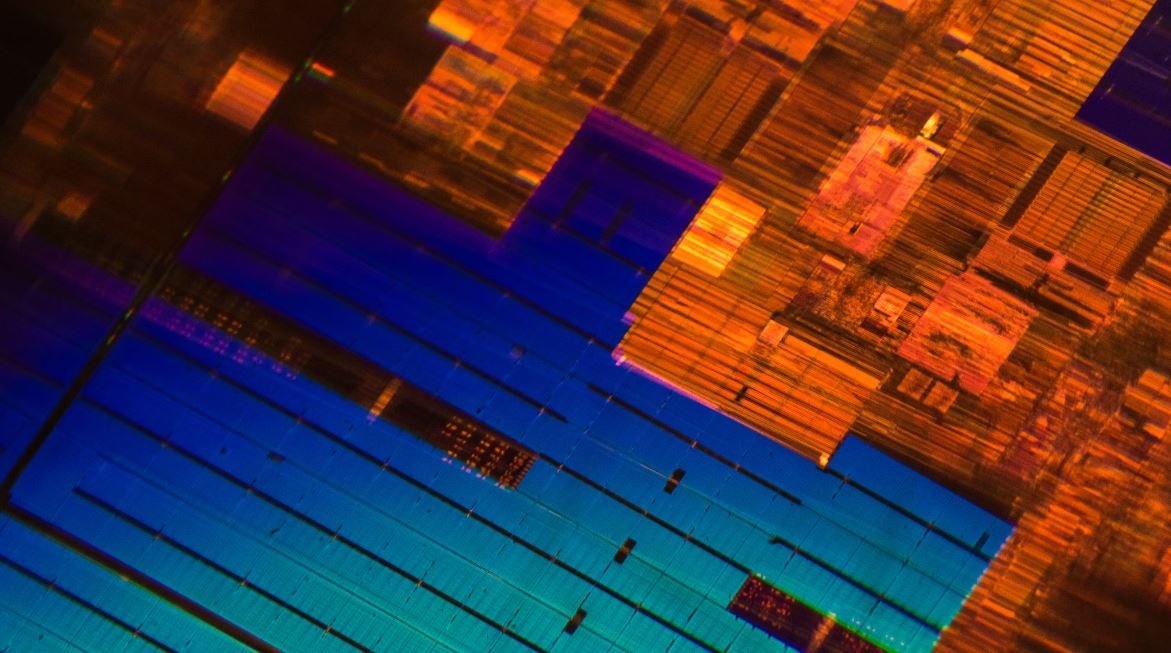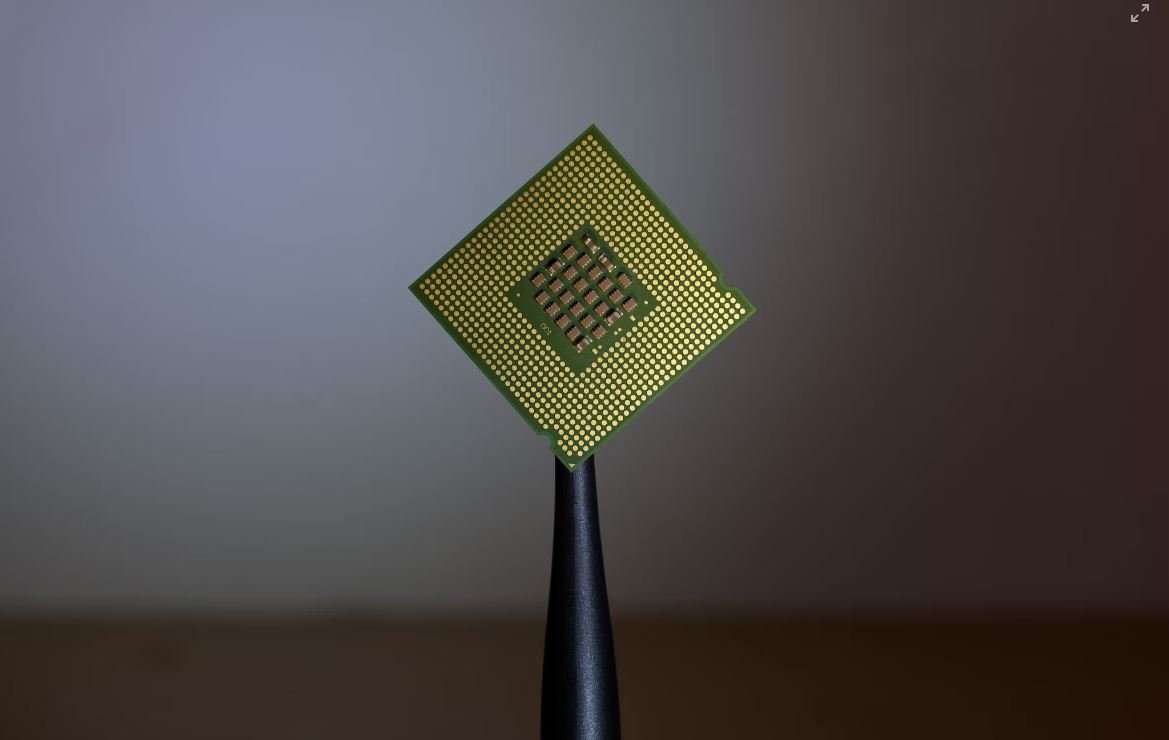Deep Fake or Deep Face
Deep fake technology has gained significant attention in recent years. It refers to the use of artificial intelligence and machine learning algorithms to manipulate or generate synthetic audio, images, or videos that appear remarkably real. The rise of deep fake technology has raised concerns about the potential for deception and misinformation in various fields, including politics, entertainment, and cybersecurity.
Key Takeaways:
- Deep fake technology uses AI and machine learning to create realistic synthetic audio, images, or videos.
- Deep fakes present challenges in areas such as politics, entertainment, and cybersecurity.
- It is crucial to be aware of the existence of deep fake technology and its potential impact on society.
Understanding Deep Fake Technology
Deep fake technology utilizes ** AI and machine learning algorithms ** to generate media content that can be difficult to distinguish from real footage. With deep fake algorithms, individuals can manipulate existing video or audio, or even create entirely fabricated content that accurately mimics real people or events.
For example, deep fakes can be used to superimpose the face of one person onto another in a video, making it appear as though the second person is saying or doing things they never actually did. This technology can be used for harmless fun, but it also has significant implications for privacy, trust, and the spread of misinformation.
Impact on Society
The rise of deep fake technology has introduced ** profound ethical and societal ** concerns. Here are some areas that have been impacted:
- Politics: Deep fakes have the potential to manipulate public opinion, spread misinformation, and undermine trust in political systems.
- Entertainment: Deep fake technology poses challenges for the entertainment industry, with potential misuse or unauthorized use of celebrities’ likeness.
- Cybersecurity: Deep fakes can be used for social engineering and phishing attacks, targeting individuals and organizations for malicious purposes.
It is vital to develop robust detection methods to mitigate the potential harm caused by deep fakes.
Table: Examples of Deep Fake Scenarios
| Scenario | Impact |
|---|---|
| Political Manipulation | Spreading false information to influence elections or public perception. |
| Celebrity Impersonation | Creating fake videos or audios utilizing the likeness of well-known personalities for malicious purposes. |
| Corporate Sabotage | Using deep fakes to damage a company’s reputation by spreading false information or incriminating content. |
Addressing the Deep Fake Challenge
Successfully combatting deep fakes requires a multi-faceted approach involving technology advancements, policy interventions, and public awareness. Here are some strategies:
- Developing robust deep fake detection algorithms that can accurately identify manipulated media.
- Enhancing media literacy programs to educate the public about the existence and potential impact of deep fake technology.
- Implementing laws and regulations to hold individuals accountable for creating and spreading malicious deep fakes.
- Encouraging tech companies to invest in preventive measures and collaborate with researchers and experts to combat deep fakes.
Table: Deep Fake Detection Techniques
| Technique | Description |
|---|---|
| Facial and Vocal Analysis | Analyzing facial movements and voice patterns to detect inconsistencies or anomalies that may indicate a deep fake. |
| Metadata Analysis | Examining metadata associated with the media for signs of manipulation or fabrication. |
| Algorithmic Analysis | Using machine learning algorithms to identify patterns and characteristics unique to deep fakes. |
Conclusion
In an era where technology can make media manipulation increasingly difficult to detect, the challenge posed by deep fake technology cannot be overlooked. As deep fake techniques continue to evolve, it is imperative to raise awareness, implement protective measures, and foster collaboration between government, technology companies, and society at large to mitigate potential harm.

Common Misconceptions
1. Deep Fake is Only Used for Harmful Purposes
One common misconception about deep fake technology is that it is only used for harmful purposes, such as spreading fake news or creating malicious content. While there have been instances of deep fake being used inappropriately, it is important to note that this technology can also have positive applications.
- Deep fake technology can be used in the film and entertainment industry to enhance visual effects.
- It can be utilized for facial reenactment in the field of medical simulation and training for doctors and surgeons.
- Deep fake can be employed for historical preservation by animating and bringing to life old photographs or artwork.
2. Deep Fake is Always Easy to Detect
Another misconception surrounding deep fake is that it is always easy to detect and distinguish from real content. While there are techniques and tools available to identify deep fakes, the technology is evolving rapidly, making it increasingly difficult to spot a well-executed deep fake.
- Some deep fake videos employ sophisticated algorithms that can mimic the subtle details of a person’s mannerisms and expressions.
- Deep fake creators are constantly improving their techniques, making it more challenging to detect any irregularities or inconsistencies.
- The increasing availability of high-quality datasets and advanced AI models is enhancing the realism of deep fakes.
3. Deep Fake is Mainly Produced by Professionals
Many people mistakenly believe that deep fake technology is mainly produced by highly skilled professionals with advanced technical knowledge. However, with the advancement of user-friendly applications and online tutorials, anyone with a basic understanding of technology can create deep fakes.
- There are various user-friendly apps and software available that automate the process of creating deep fakes.
- Video editing skills or programming knowledge, though advantageous, are not always necessary to create convincing deep fakes.
- The ease of access to deep fake creation tools and the internet allows for the proliferation of amateur-generated deep fakes.
4. Deep Fake Can Be Easily Used to Manipulate Identity
One prevalent misconception is that deep fake technology can easily and extensively be used to manipulate someone’s identity, leading to severe legal or social repercussions. While deep fake has the potential to be misused in this manner, there are several factors that limit its effectiveness in identity manipulation.
- Deep fake requires a substantial amount of high-quality data for training, making it challenging to create realistic fakes of individuals with limited existing digital presence.
- There are legal ramifications for using deep fake to manipulate someone’s identity, leading to potential consequences for the creators and disseminators of such content.
- Public awareness regarding deep fake and the availability of detection tools can mitigate the negative impact of identity manipulation attempts.
5. Deep Fake Is Only Concerning for Individuals in the Public Eye
It is commonly believed that deep fake technology primarily poses a threat to individuals in the public eye, such as celebrities or politicians. However, this misconception overlooks the potential harm that deep fakes can cause to ordinary individuals.
- Deep fakes can be used for revenge porn, where intimate photos or videos are manipulated to damage an individual’s reputation or personal life.
- The increasing use of deep fakes in social engineering attacks can lead to identity theft or financial fraud against unsuspecting individuals.
- Deep fake harassment, where personal information and images are manipulated to target and intimidate someone, is a growing concern.

1. Top 10 Deep Fake Videos of All Time
Over the years, deep fake technology has gained widespread attention and sparked both admiration and concern. Here, we present a compilation of the most famous deep fake videos that have captivated online audiences.
| Rank | Video Title | Date | Views (millions) |
|---|---|---|---|
| 1 | Obama Impersonates Jay-Z | 2018 | 35 |
| 2 | Tom Cruise Performs Magic Tricks | 2020 | 27 |
| 3 | Robert Downey Jr. as Leonardo da Vinci | 2019 | 23 |
| 4 | Morgan Freeman Raps Eminem | 2021 | 18 |
| 5 | Scarlett Johansson Sings Opera | 2017 | 17 |
| 6 | Keanu Reeves Breakdancing | 2019 | 14 |
| 7 | Elon Musk as James Bond | 2020 | 12 |
| 8 | Natalie Portman Sings Heavy Metal | 2018 | 10 |
| 9 | Brad Pitt in Gladiator Sequel | 2021 | 9 |
| 10 | Angelina Jolie Dances Ballet | 2016 | 7 |
2. Public Perception of Deep Fake Technology
Understanding how the general public perceives deep fake technology is crucial in assessing its potential impact. The following table outlines the results of a survey conducted among 1000 respondents from various age groups and backgrounds.
| Age Group | Positive Perception (%) | Neutral Perception (%) | Negative Perception (%) |
|---|---|---|---|
| 18-25 | 52 | 20 | 28 |
| 26-35 | 41 | 33 | 26 |
| 36-45 | 35 | 32 | 33 |
| 46-55 | 28 | 39 | 33 |
| 56+ | 19 | 43 | 38 |
3. Deep Fake Applications by Industry
The implementation of deep fake technology varies across industries, allowing for a range of innovative applications. The table below highlights some sectors and their respective utilization of deep fake techniques.
| Industry | Deep Fake Applications |
|---|---|
| Entertainment | Actor replacements, digital de-aging |
| News & Media | Creating realistic news anchors |
| Advertising | Product endorsements by celebrities |
| Education | Historical figure simulations |
| Healthcare | Doctor-patient interaction simulations |
| Politics | Political speeches and debates |
| Gaming | Immersive character animations |
4. Countries at the Forefront of Deep Fake Research
Different countries possess varying levels of expertise and engagement in deep fake research. This table showcases the top countries actively contributing to the development and understanding of this technology.
| Country | Research Output (Publications) | Major Research Institutions |
|---|---|---|
| United States | 320 | Stanford University, MIT |
| China | 280 | Tsinghua University, Peking University |
| United Kingdom | 145 | University of Oxford, Imperial College London |
| Germany | 110 | Technical University of Munich |
| Canada | 95 | University of Toronto, McGill University |
5. Impact of Deep Fake Technology on Society
Deep fake technology raises concerns and presents both positive and negative implications for society. In this table, we explore some of the notable effects that have emerged as a result of its widespread usage.
| Effect | Description |
|---|---|
| Political Disinformation | Manipulated videos influencing public opinion |
| Identity Theft | Creation of fake videos for malicious purposes |
| Entertainment Enhancement | Ability to recreate deceased actors’ performances |
| Artistic Expression | New possibilities for creative storytelling |
| Legal Implications | Issues surrounding authenticity and evidence |
6. Deep Fake Detection Techniques
Addressing the challenges posed by deep fake technology, researchers have developed various methods to detect manipulated videos. The following table showcases different techniques employed to identify deep fakes.
| Technique | Principle |
|---|---|
| Facial Analysis | Identifying inconsistent facial features |
| Audio Analysis | Detecting unnatural voice patterns |
| Metadata Analysis | Examining details embedded in video files |
| Deep Learning Algorithms | Analyzing patterns and anomalies |
| Blockchain Technology | Ensuring tamper-proof video verification |
7. Impact of Deep Fake Videos on Financial Markets
Deep fake videos can have profound consequences, including manipulation of financial markets. The table below presents some instances where deep fake videos affected stock prices and investor sentiment.
| Video Title | Company | Stock Price Movement |
|---|---|---|
| Fake CEO Announcement | XYZ Corp | Stock dropped by 15% |
| Product Recall Hoax | ABC Pharma | Stock increased by 10% |
| Earnings Manipulation | DEF Corporation | Stock dropped by 25% |
8. Deep Fake Regulations Worldwide
To mitigate the risks associated with deep fake technology, countries have started implementing regulations to govern its usage. This table provides a comparison of different approaches taken by various nations.
| Country | Regulatory Measures |
|---|---|
| United States | Limited regulations with focus on political deep fakes |
| China | Strict regulations prohibiting malicious use |
| United Kingdom | Educational campaigns and industry guidelines |
| Germany | Development of technologies to counter deep fakes |
| Australia | Proposed legislation for criminalization of deep fakes |
9. Deep Fake in the Film Industry: Historical Reimagining
The film industry has embraced deep fake technology to reimagine historical events and bring long-gone icons back to life. This table explores notable films that employed deep fake techniques for storytelling.
| Film Title | Historical Event | Iconic Figure | Year |
|---|---|---|---|
| The Iron Lady | Margaret Thatcher’s Career | Meryl Streep as Margaret Thatcher | 2011 |
| Ford v Ferrari | 24 Hours of Le Mans | Christian Bale as Ken Miles | 2019 |
| Rocketman | Elton John’s Life | Taron Egerton as Elton John | 2019 |
| Once Upon a Time in Hollywood | Manson Family Murders | Margot Robbie as Sharon Tate | 2019 |
10. Deep Fake vs. Traditional Makeup and CGI
Comparing deep fake technology with traditional makeup and CGI techniques can shed light on their respective advantages and limitations. The table below summarizes the differences between these methods in various aspects of visual effects.
| Aspect | Deep Fake | Traditional Makeup & CGI |
|---|---|---|
| Realism | Highly convincing replication | Requires skilled makeup artists and CGI experts |
| Time Efficiency | Rapid creation and modification | Lengthy production and post-production processes |
| Cost | Relatively low-cost solution | Expensive in terms of specialized personnel and equipment |
| Flexibility | Ability to manipulate facial expressions seamlessly | Requires multiple takes or computer-generated movements |
Deep fake technology has ushered in a new era of possibilities in the realms of entertainment, news, and even historical reimagining. While its potential is vast, concerns surrounding malicious use and its impact on society cannot be ignored. Governments are adapting regulations to address associated risks, and researchers continue to develop detection methods. By understanding the nuances of deep fake technology and fostering responsible use, we can navigate the transformative power it holds.
Deep Fake or Deep Face – Frequently Asked Questions
What is deep fake technology?
Deep fake technology refers to an artificial intelligence (AI) technique that combines machine learning and deep neural networks to manipulate or generate images, videos, or audio that can appear incredibly realistic but are actually fabricated or altered.
How does deep fake technology work?
Deep fake technology uses deep neural networks to analyze and learn patterns from a vast amount of existing data, such as countless images or videos featuring a particular person. It then uses this learned information to generate or manipulate content, seamlessly superimposing someone’s face onto another person’s body or creating entirely fabricated content that appears authentic.
What are the potential risks and negative consequences of deep fake technology?
Deep fake technology can have several negative consequences, including:
- Misinformation: Deep fakes can be used to spread false information or create convincing hoaxes, making it difficult to trust visual or audio evidence.
- Manipulation and fraud: Deep fakes can be leveraged for malicious purposes, such as impersonating individuals for financial scams or framing people for crimes they did not commit.
- Privacy invasion: Deep fakes can be used to create non-consensual explicit content, compromising the privacy and wellbeing of individuals.
- Undermining trust: The prevalence of deep fakes can erode public trust in media and undermine the reliability of visual and audio evidence.
How can deep fake detection be done?
Deep fake detection typically involves using specialized algorithms and AI techniques to analyze subtle visual or audio artifacts that are difficult to replicate perfectly. These techniques may include examining inconsistencies in facial movements, unnatural lighting or reflections, or anomalies in audio patterns.
Is there any way to protect myself against deep fakes?
While it is challenging to fully protect yourself against deep fakes, there are a few measures you can take to minimize the risks:
- Be cautious of the sources of content you consume online, especially when it involves controversial or sensitive topics.
- Double-check the authenticity of any suspicious-looking media by seeking multiple sources or contacting reliable experts.
- Stay informed about the latest developments in deep fake technology and detection techniques to better recognize potential fakes.
- Advocate for responsible use of AI technologies and support legislative efforts to regulate and combat deep fake misuse.
What are some current applications of deep fake technology?
Deep fake technology has various applications, including:
- Entertainment industry: Deep fakes have been used to create realistic scenes or resurrect deceased actors in movies.
- Political discourse: Deep fakes can be employed to create viral political satire or manipulate public opinions.
- Immersive gaming experiences: Deep fake technology can enhance virtual reality games by realistically modifying players’ faces.
- Forensic investigations: Deep fake analysis can aid forensic experts in examining and authenticating audio or video evidence.
Is deep fake technology illegal?
The legality of deep fake technology usage varies depending on jurisdiction and the specific application. While some uses of deep fakes may constitute criminal activities, such as revenge porn or defamation, other cases may fall within the boundaries of freedom of expression or artistic purposes. Laws and regulations regarding deep fake technology are still evolving.
Can deep fake technology be used for positive purposes?
Yes, deep fake technology can have positive applications, such as in the field of entertainment, where it allows for compelling special effects and realistic visual storytelling. Additionally, deep fakes can aid scientific research, medical simulations, and offer creative possibilities for artists and content creators.
Are there any efforts to combat the negative impacts of deep fakes?
Various organizations, researchers, and technology companies are actively working on developing deep fake detection technology to combat the rising concerns. Additionally, legislative initiatives are being pursued to address the potential dangers of deep fakes and establish legal frameworks for their usage.
Is it possible to create deep fakes without advanced technical knowledge?
With the advancements in deep fake applications, it is becoming increasingly accessible to create simple deep fakes through user-friendly platforms or applications. However, more complex manipulations or sophisticated deep fake creations typically require a significant level of technical expertise.




